Migrasome regulator TSPAN4 shapes the suppressive tumor immune microenvironment in pan-cancer
- PMID: 39723210
- PMCID: PMC11668678
- DOI: 10.3389/fimmu.2024.1419420
Migrasome regulator TSPAN4 shapes the suppressive tumor immune microenvironment in pan-cancer
Abstract
Background: Migrasomes are newly identified organelles on the retracting fibers of migrating cells, involved in releasing signaling molecules, expelling damaged mitochondria, and facilitating intercellular communication through phagocytosis. TSPAN4, a key regulator of migrasome formation, is a valuable marker for visualizing these organelles. However, its role in cancer remains unclear.
Methods: We analyzed TSPAN4 expression and its prognostic significance across multiple cancers using TCGA Pan-Cancer (PANCAN), and TCGA TARGET GTEx datasets. The relationship between TSPAN4 and tumor heterogeneity, stemness, and the immunosuppressive tumor microenvironment was explored through RNA-seq and scRNA-seq data. In addition, we examined TSPAN4's role in glioma, focusing on migrasome formation, cell proliferation, and macrophage polarization.
Results: Our analysis reveals that TSPAN4 is aberrantly expressed in various tumors, likely linked to its methylation status. It correlates with tumor heterogeneity, stemness, and a suppressive immune microenvironment. In glioma, TSPAN4 enhances cell proliferation and promotes macrophage polarization toward the immunosuppressive M2 phenotype.
Conclusions: TSPAN4, as a migrasome regulator, plays a crucial role in shaping the immunosuppressive tumor microenvironment in pan-cancer.
Keywords: TSPAN4; glioma; pan-cancer; prognosis; tumor immune microenvironment.
Copyright © 2024 Wang, Xu and Wu.
Conflict of interest statement
The authors declare that the research was conducted in the absence of any commercial or financial relationships that could be construed as a potential conflict of interest.
Figures
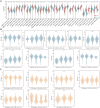
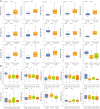
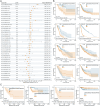

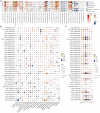
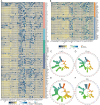



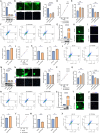
Similar articles
-
TSPAN4+ fibroblasts coordinate metastatic niche assembly through migrasome-driven metabolic reprogramming and stromal-immune crosstalk in pancreatic adenocarcinoma.Front Immunol. 2025 May 15;16:1594879. doi: 10.3389/fimmu.2025.1594879. eCollection 2025. Front Immunol. 2025. PMID: 40443671 Free PMC article.
-
Migrasome-related prognostic signature TSPAN4 correlates with immune infiltrates and metabolic disturbances in hepatocellular carcinoma.J Gastroenterol. 2025 May;60(5):593-606. doi: 10.1007/s00535-025-02212-4. Epub 2025 Jan 12. J Gastroenterol. 2025. PMID: 39799524
-
TSPAN4 and migrasomes in atherosclerosis regression correlated to myocardial infarction and pan-cancer progression.Cell Adh Migr. 2023 Dec;17(1):14-19. doi: 10.1080/19336918.2022.2155337. Cell Adh Migr. 2023. PMID: 36513632 Free PMC article.
-
Research Progress and Direction of Novel Organelle-Migrasomes.Cancers (Basel). 2022 Dec 26;15(1):134. doi: 10.3390/cancers15010134. Cancers (Basel). 2022. PMID: 36612129 Free PMC article. Review.
-
Redefining Tumor-Associated Macrophage Subpopulations and Functions in the Tumor Microenvironment.Front Immunol. 2020 Aug 4;11:1731. doi: 10.3389/fimmu.2020.01731. eCollection 2020. Front Immunol. 2020. PMID: 32849616 Free PMC article. Review.
Cited by
-
Migrasome-Related Genes as Potential Prognosis and Immunotherapy Response Predictors for Colorectal Cancer.Biomedicines. 2025 Mar 26;13(4):799. doi: 10.3390/biomedicines13040799. Biomedicines. 2025. PMID: 40299331 Free PMC article.
-
TSPAN4+ fibroblasts coordinate metastatic niche assembly through migrasome-driven metabolic reprogramming and stromal-immune crosstalk in pancreatic adenocarcinoma.Front Immunol. 2025 May 15;16:1594879. doi: 10.3389/fimmu.2025.1594879. eCollection 2025. Front Immunol. 2025. PMID: 40443671 Free PMC article.
References
MeSH terms
Substances
LinkOut - more resources
Full Text Sources

